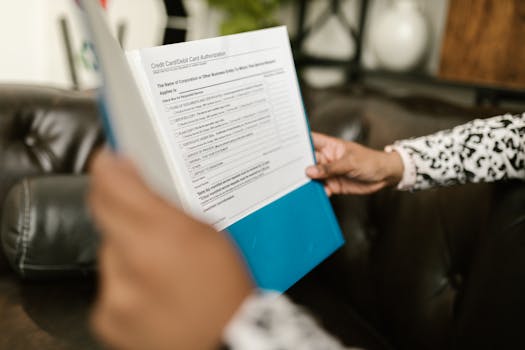Home Insurance
How to File a Home Insurance Claim Step by Step
Follow this clear step-by-step guide to file a home insurance claim stress-free. Learn what each phase requires, how to document damages properly, work with adjusters, and get peace of mind.
Advertisement
When a storm leaves your roof leaking or a pipe bursts in the kitchen, filing a home insurance claim can feel overwhelming. Yet, understanding each phase helps turn anxiety into action, unlocking your policy’s protection when you need it most.
Home insurance deeply matters because it shields you from unexpected financial burdens. Knowing exactly what steps come next after damage means you won’t miss opportunities for recovery, nor leave vital documentation behind. Preparation is your strongest ally in such moments.
This guide breaks the home insurance claim process into actionable, manageable steps. Even if you’ve never filed a claim, you’ll feel prepared and confident by the end. Let’s start by understanding which damages your policy truly covers.
Spotting Covered Events and Reviewing Your Policy Details Matters
Recognize what your insurance protects before a claim arises. Confirm the events and damages your policy lists, so your home insurance claim efforts aim at supported losses, saving time and frustration.
Review your policy documents after every renewal. Circle, highlight, or note what’s covered—fire, storms, theft, water damage—and precisely where exclusions start. Small print may hold big surprises if overlooked when filing your home insurance claim.
Decoding Common Coverage Terms in Home Insurance
Different policies define perils and damages in tricky ways. For example, “water damage” might protect you from burst pipes but not flooding. Grab your declarations page and review it line by line as if you’re preparing for a quiz.
If you see unfamiliar terms—say, “ordinance or law exclusion”—mark them. Later, call your insurer and ask, “Does my policy cover this if my city updates building codes after a fire?” Concrete answers prevent confusion after an incident.
This vigilance ensures your home insurance claim only targets losses actually backed by your provider, freeing you from surprise denials on technical grounds.
Analyzing Exclusion Sections to Avoid Pitfalls
Read exclusion lists as carefully as your favorite recipe—missing an ingredient changes the whole outcome. For home insurance, exclusions note precisely which events don’t trigger a payout, like earthquakes or neglect.
Suppose there’s an exclusion for “gradual leaks.” In that case, your claim for slow water damage wouldn’t qualify, but a sudden burst pipe would. When in doubt, note the scenario and ask your agent directly for what would—and would not—apply.
Use your findings to assemble a simple checklist for emergencies, ensuring home insurance claim actions focus on covered events only, protecting time and energy.
| Event | Usually Covered | Requires Extra Policy | What to Check Next |
|---|---|---|---|
| Fire Damage | Yes | No | List emergency contacts, know your deductible |
| Water (burst pipe) | Yes | No | Locate your shut-off valve and document damage |
| Flood | No | Yes (Flood Insurance) | Ask agent about flood add-ons and costs |
| Theft/Vandalism | Yes | No | Photograph possessions, keep receipts safely |
| Earthquake | No | Yes (Earthquake Insurance) | Review if your area is at risk for quakes |
Documenting Damages Immediately Helps Secure Your Claim
Act within hours of discovering property loss—this ensures your home insurance claim includes fresh, vivid evidence. Insurers trust immediate documentation far more than faded memories or old photos taken after cleanup.
Snap wide-angle and close-up shots of everything affected before moving debris or making repairs. Write down what happened while details are sharp. Place digital backups of each photo and note in a single folder for easy access.
Gather Essential Details for Your Home Insurance Claim
File receipts, warranty cards, or model numbers for all high-value items lost or damaged. Write a short inventory, listing brands, dates, and values. If possible, find warranty paperwork and upload it to your online claim folder.
Maintain a personal logbook or digital note that tracks what was lost and when you noticed it. This can become central to your success during adjuster meetings, especially for high-value or sentimental items.
- Capture date/time-stamped photos — Home insurance adjusters use photo evidence to verify damage quickly and prioritize urgency.
- Keep receipts for emergency repairs — Submit all bills for temporary fixes, as some policies reimburse necessary, documented work.
- Update your home inventory list — This helps your claim prove losses and the value of stolen or ruined possessions with documentation.
- Label salvageable items separately — Distinguish between ruined and restorable goods for the insurance adjuster’s clarity.
- Store backups digitally — Use cloud options to secure all uploads, protecting them from further damage on-site.
Having every detail ready turns a stressful scramble into structured, confident action—helping your home insurance claim be processed faster.
Organizing Documents for Stress-Free Communication
Sort your paperwork by damage type: structure, personal possessions, alternative housing, repairs. Attach supporting docs to each file set, labeling each stack or folder according to the claim section—making it easier for everyone involved.
Send legible digital copies, not originals, to your claims rep. Label each file with your name, date, and item. For example, “Smith_Kitchen_WaterDamage_May2023_Photos.jpeg.” This attention to detail keeps your home insurance claim moving smoothly.
- Scan and label all receipts — Save originals for your records, giving insurers clear evidence for reimbursement on specific repairs or replacements.
- File paperwork by category — Divide into damage type for easier access during claim reviews or follow-up calls.
- Provide brief descriptions — Attach short notes to each document explaining its relevance or what it displays.
- Consolidate digital files — Use a cloud folder named after your address or claim number for referencing later on.
- Keep a master checklist — Mark off each item sent and confirmed as received, avoiding mix-ups during follow-up discussions.
Routines like this save hours of frantic searching and keep your home insurance claim from being delayed over missing papers or forgotten photos.
Contacting Your Provider and Initiating the Official Claim
Every successful home insurance claim relies on quick, clear communication. Notify your insurance company as soon as you’re safe and have initial documentation ready, so the claims process starts fast and efficiently.
Start With a Phone Call or Online Portal
Call your insurer’s claims line directly or use their official online portal. Many firms prefer online platforms, which generate reference numbers instantly and prompt secure information uploads, keeping your progress visible at all times.
During the call or submission, prepare to calmly state the following: your address, the damage date and cause, covered items affected, and initial documentation. Speak clearly and keep your notes beside you, confirming every detail matches your files.
If you’re unsure about any claim process step, ask your insurance agent to walk you through the online portal’s features—step-by-step. A typical script: “Can you help me understand how to upload my invoices for my home insurance claim?”
Read and Complete All Provided Forms Carefully
Insurers require specific forms detailing every aspect of your damage, from the type of loss to each affected item’s estimated value. Read each instruction twice and fill out sections promptly, keeping all correspondence for your records.
If something isn’t clear, send a polite email to your claims handler: “Could you clarify what documentation is required for this section of the form?” This prevents holdups and ensures your home insurance claim won’t be delayed by incomplete forms.
Attach all evidence, including photos and inventory documentation, in the format your insurer requests—cloud upload or traditional mail. Double-check that every file is labeled and organized, preventing confusion later in the home insurance claim process.
Meeting With Adjusters and Showing Proof Effectively
Your claims adjuster assesses damage and validates your evidence. Prepare your photos, receipts, and documentation in advance, then walk the adjuster through the property as you would with a trusted contractor—clear, thorough, and businesslike.
For high-value losses, be explicit. Present original receipts if available or show photos of the item in your space. If you lack proof of ownership, describe the history or purchase story. For example, “This laptop was a gift from my employer in 2020; here’s my acceptance email.” This context strengthens your home insurance claim.
Schedule the Adjuster Visit With Flexibility and Foresight
Reply quickly when your insurer proposes appointment slots. If none work, propose alternatives but stress urgency: “Is there a morning slot this week for my home insurance claim? I need repairs soon.” Being proactive gets you seen faster.
Show all affected areas. Remain factual—not emotional—about losses. For disputed items, calmly provide your backup evidence in person: “This television’s receipt is here; the serial number matches.” Such preparation turns you into a respected partner, not a passive claimant.
Jot down the adjuster’s suggestions or repair recommendations. After the meeting, review these notes carefully, as some might require you to obtain new estimates or contact additional contractors for your home insurance claim paperwork.
Following Up After the Adjuster’s Assessment
Request a copy of the adjuster’s report as soon as it’s generated. Review for discrepancies or missing points, then communicate any errors in writing with supporting evidence for your home insurance claim’s full consideration.
Track timelines using a simple spreadsheet with columns for claim milestones: notification, inspection, documentation, review, and payout decision. Email your claims rep polite reminders if any step exceeds its estimated date by more than two business days.
Stay patient but persistent. Insurance workflows can be slow, especially after major disasters. Use your records and organized evidence to keep your home insurance claim moving toward resolution, demonstrating you’re actively engaged throughout the process.
Reaching Settlement and Gaining Peace of Mind
The steps you take—documenting, communicating clearly, and providing thorough evidence—directly determine your home insurance claim outcome. Purposeful action at each phase prevents unnecessary stress, late payments, or incomplete repairs.
Safeguarding your property starts with knowing what’s in your policy and making the home insurance claim process predictable. Being ready for emergencies means you’ll always have documentation, review your coverage, and ask precise questions—transforming disasters into restore-and-rebuild moments.
By following these strategies, you turn your home insurance claim from guesswork into a reliable, stepwise plan. Each claim, handled thoughtfully, brings protection you can trust—so you can focus on recovering, not paperwork or uncertainty.





